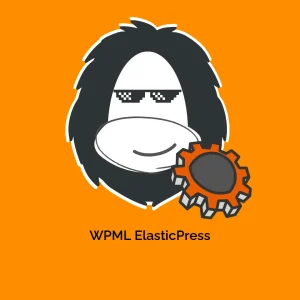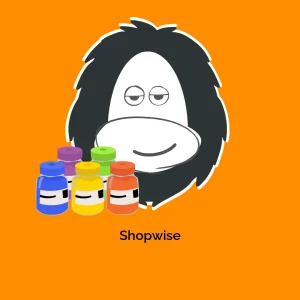Elevating Your Email Campaigns with Newsletter Elastic Email
In today’s digital landscape, effective communication with your audience is paramount. That’s where the Newsletter Elastic Email integration shines, providing seamless connectivity with ElasticEmail’s robust mail delivery service. This powerful toolkit not only simplifies the entire process of managing your newsletters but also ensures that your communications reach their intended recipients timely and efficiently.
How to Optimize Your Use of Elastic Email for Newsletters
With the integration of Newsletter Elastic Email, the primary goal is enhancing email delivery while maintaining a user-friendly experience. Here are the essential steps and considerations to make the most of this integration.
Validating Your Domain
A vital first step in setting up your Newsletter Elastic Email integration is domain validation. Validating your domain is critical for ensuring your emails are recognized as legitimate, helping to improve delivery rates. Here’s how to go about it:
- Access the ElasticEmail Console – Navigate to the ‘Settings’ section, followed by ‘Domains’.
- Add Your Domain – Enter the domain name you wish to validate, excluding ‘www’.
- DNS Configuration – You will need to adjust your DNS settings to include both SPF and DKIM records, which will help verify your domain. If DNS configurations are not your forte, don’t hesitate to consult your hosting provider for assistance.
- Retrieve Required Values – To find the necessary values for SPF and DKIM, simply click the help icon next to each option within the ElasticEmail interface.
- Verification Process – Once your DNS entries are in place, return to the ElasticEmail console to click ‘verify’. If successful, a green check mark confirms that your domain is verified. Note that you can opt to validate using solely the SPF record if necessary.
Obtaining an API Key
Once your domain is set up, acquiring your API key is the next step in utilizing Newsletter Elastic Email efficiently. Here’s how it is done:
- Find API Key in Settings – Head over to the ‘SMTP/API’ section under ‘Settings’.
- Copy the API Key – Your unique API key will be prominently displayed. Copy this key as it will be essential for configuring your extension.
- Testing – After entering the key into your configuration, perform a series of tests. Once you confirm that everything works smoothly, you can enable the extension for regular use.
Utilizing Subaccounts for Enhanced Control
For businesses managing multiple newsletters or campaigns, Newsletter Elastic Email offers the option of creating subaccounts. This feature is particularly valuable for agencies or teams that require separate API keys for distinct functions. Here’s how subaccounts benefit your organization:
- Individual API Keys: If you have multiple newsletters managed by different individuals, creating a subaccount for each allows for better tracking and control over API usage and performance.
- Reputation Management: Keeping separate API keys tied to distinct accounts can protect your main account’s reputation in case one subaccount experiences deliverability issues.
For instance, if one of your domains isn’t performing well, it won’t adversely impact the other newsletters you have running under different subaccounts.
Turbo Send for Enhanced Delivery
One of the standout features of the Newsletter Elastic Email integration is the Turbo Send option. This functionality enables concurrent email dispatches—allowing multiple emails to be sent simultaneously rather than sequentially. While this can significantly boost the efficiency of your campaigns, a few factors should be considered:
- Testing with Your Hosting Provider: Some hosting providers may have configurations that limit concurrent emailing. It’s important to run tests to gauge how Turbo Send performs within your specific environment.
- Increased Delivery Rates: By leveraging Turbo Send, you can greatly improve delivery speeds, making your campaigns more responsive and timely.
Managing the Text Segments of Your Emails
Another practical feature to utilize with Newsletter Elastic Email is the automatic generation of the plain text portion of your emails. While many emails consist of both rich HTML content and a plain text counterpart, managing these can get tricky:
- Pure Text Part Generation: ElasticEmail enables the automatic generation of text; however, when you send the plain text part via the Newsletter integration, ElasticEmail won’t generate it on its own. This can be managed by disabling text part sending in your configuration settings.
This approach ensures that your newsletters maintain a professional and coherent look, enhancing the reader’s experience while also accommodating the requirements of different email clients that might prefer plain text.
Harnessing the Power of Data and Analytics
A crucial aspect of effective email marketing is being able to analyze the performance of your newsletters. With Newsletter Elastic Email, you can access various performance metrics that help you refine your strategy:
Understanding Open and Click Rates
Use ElasticEmail’s built-in analytics to monitor how many people are opening your emails and clicking on links. This data is fundamental for understanding what resonates with your audience. For example, if a particular topic garners more clicks, consider producing more content along those lines.
A/B Testing Capabilities
Another strategic use of Newsletter Elastic Email is to conduct A/B testing on your campaigns. By creating different versions of your newsletters, you can test variations in subject lines, content structure, or send times. The insights you gather from these experiments are invaluable for improving future open and engagement rates.
Feedback Collection
Consider utilizing the feedback options available within your newsletters. Encouraging your subscribers to provide insights on content preferences or frequency can foster a stronger connection with your audience.
Integration with Other Tools
Leveraging additional tools can enhance the functionality of Newsletter Elastic Email and ensure a smoother workflow. Depending on your specific use case, consider integrating with:
- Customer Relationship Management (CRM) Systems: Pairing your email campaigns with a CRM can help segment your audience based on their previous interactions or preferences, allowing for more personalized communication.
- Social Media Platforms: Syncing your email campaigns with social media can extend your reach. Share your newsletter content on various platforms and monitor the engagement for cross-channel insights.
Best Practices for Effective Newsletter Strategy
To truly maximize the benefits of Newsletter Elastic Email, keep the following best practices in mind:
- Keep Content Relevant and Engaging: Ensure your newsletters focus on providing value. This might involve sharing industry insights, tips, or special promotions that pique your audience’s interest.
- Segment Your Audience: Tailoring content to specific segments of your audience enhances engagement. Utilize the data from your email campaigns to better understand the interests of different groups.
- Mobile Optimization: A significant portion of email interactions occurs on mobile devices; ensure your newsletters are responsive and maintain readability across all platforms.
- Test Timing and Frequency: Finding the right balance in how often you send emails can be tricky. Experiment with different days and times to find when your audience is most active.
By proficiently navigating the realm of Newsletter Elastic Email, you position your communications for success while enhancing connectivity with your audience. With domain validation, API key access, subaccount management, and advanced delivery options like Turbo Send at your fingertips, you’re well-equipped to launch effective email campaigns that resonate—and convert.
Download Newsletter – Elastic Email Plugins for free
That’s right, downloading Newsletter – Elastic Email for Free on OrangoGPL is entirely possible and legitimate.
Moreover, even downloading a cracked Newsletter – Elastic Email is law-abiding, because the license it is distributed under is the General Public License, and this license allows the user its free modification, distribution, and resale.
This way, there’s no reason to be concerned: If you were seeking to buy Newsletter – Elastic Email cheaply or, directly, to download Newsletter – Elastic Email Plugins nulled and, thus, obtain it 100% free,, you can do it within the law.
Newsletter – Elastic Email GPL: The choice for startup entrepreneurs
Call it as you prefer: Newsletter – Elastic Email deals, download Newsletter – Elastic Email Plugins GPL, download Newsletter – Elastic Email without license or download Newsletter – Elastic Email Plugins cracked.
It is completely law-abiding and something more than necessary for any startup entrepreneur.





-300x300.webp)



Reviews
There are no reviews yet.